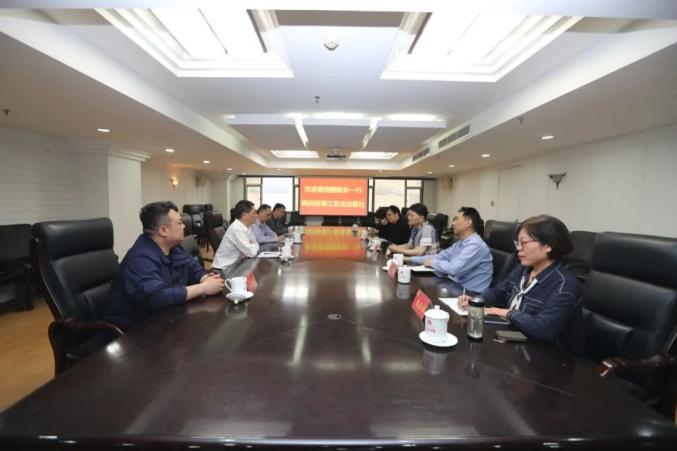If Taiwan Is Peacefully Reunified, How Will The United States Fight Back? How Should We Deal With It?
If Taiwan Is Peacefully Reunified, How Will The United States Fight Back? How Should We Deal With It?
If Taiwan is peacefully reunified, how will the United States fight back? How should we deal with it? ,Diplomatic,Taiwan, Mainland,American Congress,Peaceful Reunification,International Stage

China has always regarded Taiwan as an inalienable part of the motherland, and peaceful reunification is our core pursuit. This not only concerns the integrity of national sovereignty, but also involves the welfare and long-term development of the people on both sides of the Taiwan Strait.
In recent years, the situation in the Taiwan Strait has been complex and changeable, and the United States has been constantly intervening, trying to use the Taiwan issue to restrain China's rise. If the two sides of the Taiwan Strait achieve unity through peaceful means, the United States will not easily accept this result, because it will directly challenge its hegemony in the Asia-Pacific region.
Judging from various international think tank reports and diplomatic trends, the US's counterattack may be reflected in many aspects such as economic blockade, diplomatic isolation and military pressure. We need to be clear about these risks, and at the same time formulate comprehensive countermeasures to ensure the stability of unified results.

The historical foundation of cross-strait relations lies in the one-China principle, which is the basis for the establishment of diplomatic relations between China and the United States. When Sino-US relations were normalized in 1979, the United States promised not to challenge the position that Taiwan was part of China, but its policies have swung in recent years.
As the Brookings Institution's analysis pointed out, the United States has long pursued a strategic vague policy, neither supporting Taiwan's independence nor promising military intervention. However, as China's strength increases, the United States has begun to strengthen its support for Taiwan to maintain the balance between Asia and the Pacific.
If peaceful reunification occurs, the United States may see it as a unilateral change to the status quo, thereby initiating countermeasures. This is not a fantasy, but based on its consistent global strategic logic. For example, on the issue of Ukraine, the United States uses sanctions and coordination of allies to pressure its opponents.

The economic sector may be the primary means of the United States' fight back. The RAND company report shows that the United States has considered economic coercion as a non-military tool on the Taiwan Strait issue.
If unified implementation is implemented, the United States may expand technology export controls to China, similar to the escalation of the existing chip ban, which will cover areas such as artificial intelligence and quantum computing. This will disrupt global supply chains because China is the center of the world's manufacturing industry. After Taiwan's semiconductor industry integrates into the mainland, the United States will worry about technology outflows.
The Chicago Global Affairs Commission investigation shows that the U.S. public supports the provision of weapons to Taiwan, but opposes direct military intervention, so economic sanctions have become a low-cost option. The U.S. could impose high tariffs, cut off financial channels, and even freeze Chinese assets, as it has done in other conflicts.

Global trade data show that China's exports account for more than 14% of the world's share. After unification, cross-strait economic integration will release greater potential, but the US counterattack will try to undermine this synergy, resulting in supply chain disruptions in the short term.
Diplomacy, the US counterattack will isolate China by winning over allies. The Quincy Institute report emphasized that the United States has incorporated Taiwan into the Indo-Pacific strategic framework. If unified, the United States may push the United Nations or other international organizations to condemn China and deprive Taiwan of its original observer status, although Taiwan currently has seats in institutions such as the APEC.
The United States may also strengthen coordination with Japan and Australia to form multilateral pressure. As the Crisis Organization report pointed out, the United States will emphasize a peaceful resolution of the Taiwan issue, but the actual purpose is to prevent unification and maintain the role of the Taiwan authorities as a pawn.

Through diplomatic pressure, the United States has tried to create international public opinion, claiming that unification has damaged regional stability and thus affecting China's Belt and Road Initiative. Data shows that the Belt and Road Initiative has covered more than 150 countries, and if the United States successfully fights back, it will weaken confidence in these cooperation.
At the military level, although the US counterattack will not go directly to war, it will increase its deterrence. Analysis by the Center for Strategic and International Studies shows that the US deployment in the Western Pacific has shifted to mobile forces and missile systems. If unified, the US may increase the frequency of naval cruises to cross the Taiwan Strait to show its existence.
For example, the Defense Priority Group report mentioned that the United States will strengthen its deployment through the Philippines or Guam bases to avoid head-on conflict with China, but the purpose is to raise the threshold for intervention. The United States may also secretly support internal forces in Taiwan and create instability through intelligence activities, similar to its practices in other regions.

Overall, the U.S. military strikeback will focus on gray zone operations such as cyber attacks or electronic jamming rather than full-scale wars, as its public survey shows that only a few support the dispatch of troops.
In the face of these counterattacks, our response must be based on our own strength and safeguard national interests. First, accelerate self-sufficiency in the economy.
After the unification, Taiwan's high-tech advantages are combined with the mainland market, which can increase semiconductor production. The mainland currently accounts for 30% of the world. Through policy incentives, we can further localize key technologies and reduce dependence on the United States.

Research from Renmin University pointed out that China is the world's largest food importer, but through agricultural modernization and energy diversification, we can buffer the impact of sanctions. Restricting rare earth exports as a reciprocal means because the US defense industry relies on China's supply to 80%, which will cost it.
Diplomatic response requires active layout. We must strengthen international consensus on the one-China principle and fight back against the US narrative through multilateral forums such as the United Nations.
At present, China has established diplomatic relations with more than 180 countries. If unified, we can promote more countries to recognize the facts of unification and avoid diplomatic isolation. Strengthening cooperation with ASEAN countries and expanding the influence of the Belt and Road Initiative can disperse the pressure on the United States.

China should be clear on a peaceful resolution of the Taiwan issue and at the same time convey the determination to unify to the United States that national rejuvenation is related to national rejuvenation. Through high-level dialogue, we can ease tension and avoid misjudgment.
Military, our focus is on consolidating unified achievements. After the unification, the necessary defense forces will be deployed in Taiwan to ensure sea and air access control, which can cover key areas of the Western Pacific.
At present, the Chinese Navy has multiple aircraft carriers, and its defense budget has grown steadily, reaching US$245 billion by 2025. Through modern updates, such as hypersonic missiles and submarine development, we can improve asymmetric combat capabilities and reject external interference.

China's military projection has improved significantly. If the United States provokes, we can respond reciprocally and conduct cruises in its areas of interest, but give priority to protecting diaspora and investment security. The national defense frontier should be extended to the interests frontier. Wherever there are Chinese merchants, there is a protective force.
If peaceful reunification is achieved, although the United States will have many counterattacks, we have the ability to deal with it. Through economic self-reliance, diplomatic initiative and military consolidation, we can safeguard the results of unification and promote national rejuvenation. This requires the joint efforts of the people on both sides of the Taiwan Strait to welcome a better future.





